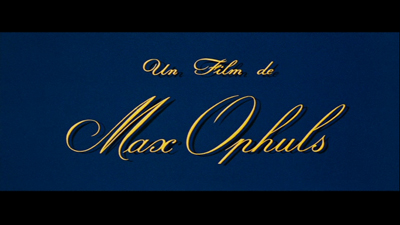

Max Ophuls's final film is, by its own billing, a deconstruction of the femme fatale. The 1955 biopic Lola Montés is also a meta-cinematic tour-de-force of show-stopping entertainment. The real Lola Montés, Countess of Landsfeld, was a 19th-century woman of repute--some of it ill, some of it surely false. A self-constructed celebrity, Lola thrived on scandal, and despite apparently being possessed of little talent, furthered her own story by putting on productions of operas and plays that featured her as the star. In the Ophuls picture, Lola ends up working for an American circus, parading herself as the ultimate spectacle. She is the untouchable woman high above the adulation of her audience, eventually falling to the earth, thus fulfilling the fame cycle where all that go up are ultimately torn down by the same two-faced crowd.
I am not sure when the term "media circus" first came into play, but Max Ophuls clearly understood the nature of modern mythologizing. His three-ring entertainment is hawked by Peter Ustinov, a master of ceremonies who cares little for the truth. He tells Lola as much when the two parallel lines of the movie come together halfway and we see him laying the offer on her table at a hotel in the French Riviera. Lola is played by Martine Carol, whose beauty is austere and immaculate. She gives us a sex object that is never anything less than perfect, and in a bold move, rarely sexy. Ophuls teases us with the salacious details of Lola's adventures, but he keeps those mostly off screen. They are the tales the ringmaster tells, and they are even re-enacted within his circus tent. Yet, they are also the parts of the story of the most questionable truth, and perhaps of the least importance.

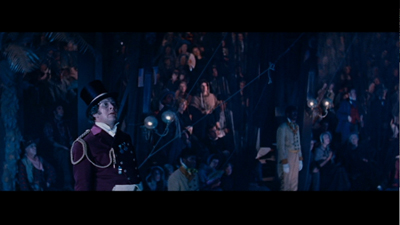
For all the early promises of lurid pawing through Lola's past, including an opening story of her affair with the composer Franz Liszt (played by Will Quadflieg), it's a bait and switch. Lola Montés is a more sympathetic character to Ophuls. She is not a victim of circumstance, more a creature of it. A master manipulator of circumstance. Her biography includes a sad early life--the mother who tried to marry her off to an old banker, Lola's own poor choice of an alternative husband, and the circumstances that led to her life in the theatre. Her first appearance in the gossip papers came as a result of her standing up for herself, and her eventual acquisition of her regal title came out of a love affair that had real love in it. Her extended stay with Ludwig I, King of Bavaria (Anton Walbrook), was the closest she would come to domestic bliss in her life. It all ended when the scandal caught up with her and revolutionaries chased her out of the country.

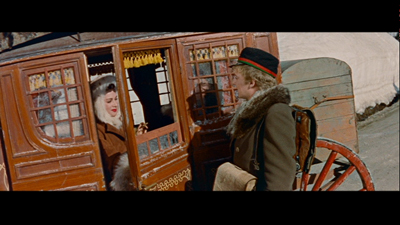
When Lola leaves Bavaria, she is accompanied by a young student she once romanced. This Latin-loving leftist (Oskar Werner) comes to her rescue because he sees Lola as symbol of freedom and love. By dancing her way across Europe unrestrained, she points the way to a more open future. I think this is how Ophuls sees her, too. A woman both too much of her time and also ahead of it. It's a high-wire act difficult to sustain.
Indeed, the lushness of Lola's romantic adventures is barely visible in the rundown circus. We see this kind of thing today, with the minor celebs who, after feeling the heat of the spotlight, do whatever they can to get back into it. If Lola thought the circus was bad, she should thank her stars there was no such thing as reality TV in the 1800s. Ophuls shows us the toll this lifestyle has taken on her. The ringmaster has to prompt her every line, as if her own belief in the stories is slipping away from her. Ophuls also has a mid-film interlude where a doctor comes to the circus to tell her boss (Friedrich Domin) that his star has a heart condition. Is there a more tragic ailment for an infamous lover to contract? Her heart was too weak to carry on. (The real Lola Montés died at the age of thirty-nine.)
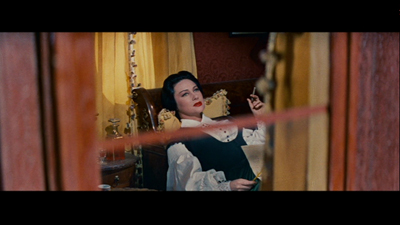
In a bizarre twist of art imitating life, the film Lola Montés suffered much misfortune and misunderstanding, even as it was adored in some circles. After a disastrous premiere, the film's producers cut the movie down, restructuring it to fit a more traditional narrative. It would be thirteen years until a version even remotely resembling what Ophuls envisioned was put back together, and not until 2008 was a full restoration done. This is the version we are now getting on DVD.
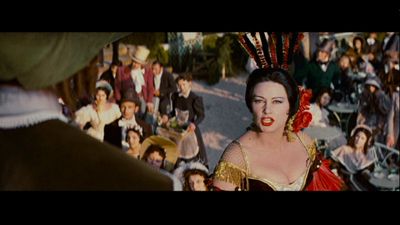
Watching Ophuls's virtuoso filmmaking, it's hard to understand how more people didn't see how incredible Lola Montés was on its original release. It's like watching Jean Renoir's The Rules of the Game or Orson Welles' Citizen Kane. (The latter's subplot with the Susan Alexander character being propped up in self-aggrandizing operas actually sprang to mind in regards to Lola Montés's similar theatrical follies.) These are films that look progressive and innovative even now, with more than half a century of cinematic and technological development coming after. If they are still better than so much of our contemporary best, how in the world weren't they adored in their own time?
Criterion started re-releasing the Max Ophuls catalogue in the summer of 2008, and it only takes watching a couple of his films to see the director's signature stylings emerge. He was fond of complex plots, ones that showed multiple layers of a story, effortlessly moving form one level to the next. We certainly get that here, with the jumping around in time, the stories within the story, etc. His ability to match that narrative agility with equally agile camerawork is a skill all filmmakers who have followed him should aspire to copy. He and cinematographer Christian Matras are as unbeholden to gravity as the trapeze-climbing Lola is in the film's final act. Ophuls loves to spin his camera around a scene, capturing the dizziness of a tale unleashed. Sometimes it's meant to invoke a loss of control, sometimes it's meant to show us a character letting go. He also loves to use depth of field, and to follow a character through the scenery. There are many memorable scenes of this type in Lola Montés, including tracking a young Lola as she zig zags down the many floors of an opera house or moving with her as she walks through a complex façade of a cruise ship. Ophuls discards practical limitations with as much confidence as Lola slays social mores. Indeed, Lola even tells us that her personal philosophy is to never stop moving, equating movement with life itself. No wonder Ophuls saw something in her story worth telling. (It also might be why he was protective of her, rather than exploiting her sexual escapades.*)
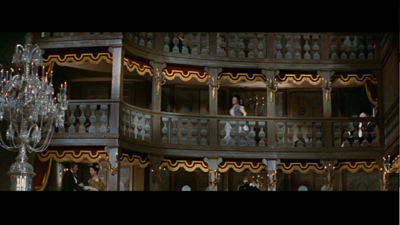

Lola Montés was shot in CinemaScope at a 2.55:1 aspect ratio, which means Max Ophuls had the widest possible frame to work in. He uses that size to open up our view of Lola's world, but also to contain it. Yes, we see the spacious fields of a garden party or feel the immensity of the circus' three rings, but Ophuls also regularly brings in the edges of the frame, opening and closing on different scenes like he is manipulating the curtains on a theatre stage.
Nowhere is an image of confinement more potent, however, than in the final shots. Lola is in a cage behind the circus tent, doted on by cherub-sized servants, reaching through the bars to shake the hands of male gawkers. She looks trapped in there, but she also looks like she is sitting on a religious throne, a madonna blessing her followers. It's Ophuls's final comment on fame. The onlookers trap even as they worship. His camera, still in flight, slowly moves back, levitating over the heads of the men trying to get their way to Lola. The line seems to go on forever. Arguably, it continues even now. Aren't we still gawking at Lola Montés today?

Lola Montés - Criterion Collection is a two-disc set. It comes in a nice cardboard book with an outer slipcase, and it features a stylish cover painting by David Downton. The artist also did design work on the trio of Ophuls films released last year (The quickest way to those three reviews is the "ophuls" tag on the posts), and by keeping the same design, collectors now have a matching Ophuls library.
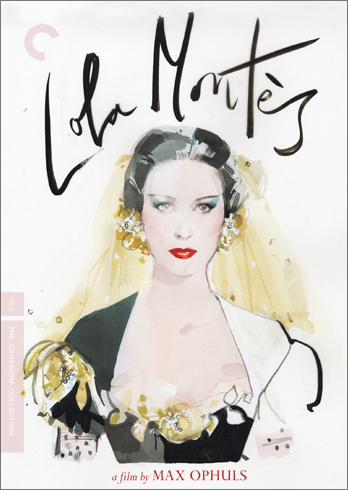
* By the by, Ustinov's stories about how Ophuls viewed Martine Carol, as relayed in the excellent documentary Max by Marcel on DVD 2, somewhat contradict my theories about how the director viewed the Lola character.
Watch the trailer on YouTube
For a full rundown on the special features, read the full article at DVD Talk.

3 comments:
just stop writing I dare you
Well, I do so want to impress you...
You may miss out some wonderful scenes and landscapes of moment in life if your camera is out of batteries dslr with flip screen. You may find it annoying when you just stand by and watch without being able to capture them
Post a Comment